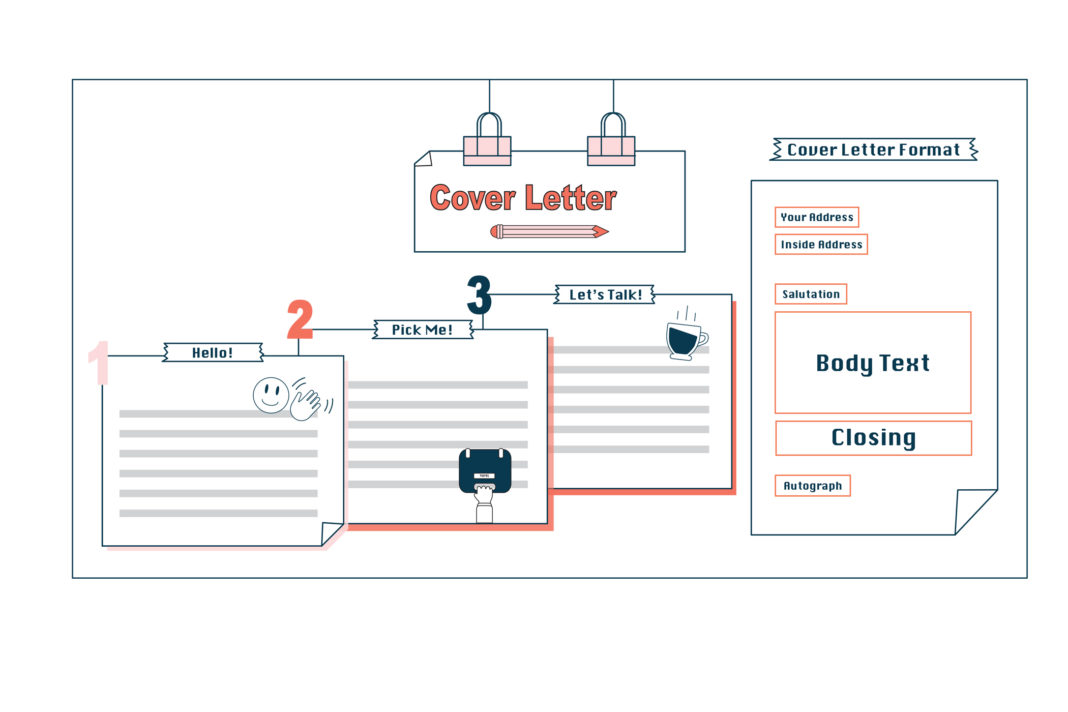You’ve found it: the perfect scholarship, job, or organization for your unique skill set and ambitions. You’ve updated your resume, tweaked your portfolio, and even gotten a haircut to make a good first impression. But before you can convince anyone to meet with you face-to-face, you’ll have to peak their interest. How do you do it? You write a killer cover letter.
Cover letters serve the purpose of introducing yourself using your own narrative voice to someone whose attention you want. In the simplest formulaic approach, you need write only three paragraphs: introduce yourself and your personal connection to the organization, explain why you are a solid fit for this application, and ask for the award or personal interview. Follow business letter format: heading (your address), inside (mailing) address, salutation, body text, and signature. Generally, keep it under a page in length.
Follow these tips top to bottom to write a first draft, step away for a while, then come back and revise for clarity:
Express your enthusiasm
You have acquired certain talents or experiences that qualify you as a potential candidate for this scholarship. So have many others. What sets you apart is your sincere desire to become the person this scholarship aims to invest in. Express that. Scholarships are often generated with hopes of propelling future generations into anticipated roles society needs to fill. When you have a passion for the scholarship foundation’s mission, make it known in your introduction.
Don’t be shy
“Students need to clearly state why they deserve to be given this money, not why they need the money,” said PSU Intensive English Language faculty Anne Greenhoe. “They need to be specific and persuasive.” Your resume lists your accolades and experiences in abbreviated form; the cover letter allows you to use your own voice to elaborate on those accomplishments. Without resorting to superlatives, offer an honest, confident evaluation of those qualities most relevant to the target audience and speak them plainly. Confidence doesn’t have to come across as arrogance.
Know your audience
Research the people and organization your are attempting to impress. As writing instructor and peer mentor for PSU’s University Studies Zina Krivoruk explained, “The most important tip for writing cover letters? Consider your audience.” Find out as much as you can about the foundation or organization offering the scholarship, and fact-check to make sure your information is up to date. What’s the organization’s philosophy or mission statement? What are the organization’s goals? Don’t take a shot in the dark or use the same form letter for everyone.
Pay attention to detail
“Line and grammar editing is paramount,” Greenhoe explained. “It doesn’t matter if a person is applying for a scholarship or job; if there are errors in grammar, the cover letter probably won’t be read in completion.” Have your letter read by trusted colleagues and revise, revise, revise. If you feel uncomfortable with apostrophes, comma placement or correct spelling, seek out resources such as the OWL or grammarly.com. If you still find yourself in a bind, several templates are available on this thing called the internet.
Keep it brief
“With cover letters, it’s important to be clear and concise, but also to provide specific examples,” said UNST Writing Coordinator Annie Knepler. Human resources personnel are often inundated with stacks of cover letters, and they don’t want to read through several lines of fluff to get to the jelly in the doughnut. Say it with style, but say it directly. If after writing your first draft the letter runs over one page, necessary mailing addresses and signature included, scan through and eliminate unnecessary verbiage. Avoid redundancies. Trim superfluous language. Some guy named Shakespeare once wrote, “Brevity is the soul of wit.”
Writing a cover letter doesn’t have to be an exercise in dread. Just let your genuine self shine through your word choice and give a draft several passes before considering it complete. Keep a record of cover letters used and their relative successes or failures, and if one technique hasn’t worked for you, shake it up and try, try again.







The article is bright and clear, without any additional
useless details or else. The language is equally brilliant and
vivid, so the further I read, the more I do like it!
I have been hunting for a post similar to this for a very long time.